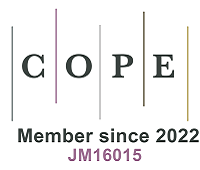Application of polymeric nanomaterials in cancer therapy: from smart delivery to precision therapy
Abstract
Although conventional modalities such as chemotherapy and radiotherapy have markedly reduced cancer incidence, they are frequently accompanied by profound adverse effects, including systemic toxicity and the emergence of multidrug resistance. While advances in immunotherapy and targeted therapy have addressed certain limitations, such as the need for precision drug delivery, cancer treatment continues to confront major challenges, particularly in overcoming tumor biological barriers to enhance therapeutic efficacy and prevent acquired resistance. With the rapid advent of novel biomaterials, polymer-based nanoparticles are reshaping traditional drug delivery paradigms and accelerating the evolution of precision oncology and intelligent drug delivery platforms. Nevertheless, comprehensive and systematic investigations remain limited regarding how polymer nanoparticles can surmount the inherent drawbacks of conventional delivery strategies in oncology. This review seeks to systematically synthesize recent advances in the application of polymer nanoparticles for cancer therapy. We highlight how the intrinsic properties of polymeric nanomaterials - such as chemical tunability, stimuli-responsive mechanisms, surface engineering, and multifunctional integration - enable breakthroughs in drug synergy, tumor barrier penetration, and spatiotemporally controlled delivery. Furthermore, we delineate the major challenges and prospective directions in this rapidly evolving field, aiming to provide a conceptual framework and potential roadmap for the next generation of cancer therapeutics.
Keywords
Polymeric nanomaterials, cancer therapy, smart delivery, stimuli-responsive, chemical tunability
Cite This Article
Sun Q, Zhang Z, Jiang R, Zhao F, Wang X, Fang S, Lin Z, Zhao Z, Wang Y, Zhang S. Application of polymeric nanomaterials in cancer therapy: from smart delivery to precision therapy. Microstructures 2025;5:[Accept]. http://dx.doi.org/10.20517/microstructures.2025.87














